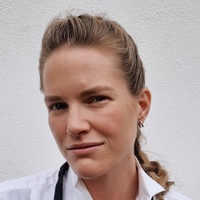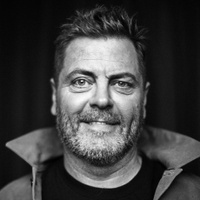On the value of working as a team
Prelude
Kailey and Sam Spear are directors, writers, and actors (and twin sisters) originally from Nex̱wlélex̱m - Bowen Island, British Columbia. They have directed in both theatre and film. Their 2014 stage version of Hamlet featured the first female Hamlet in Canada. In 2015, their short film The Mary Alice Brandon File (a Twilight prequel), was the winner of the “New Voices of the Twilight Saga” competition hosted by Lionsgate, Facebook, and Women in Film LA. For their work on that film, the twins were recognized by Women in Film LA at the Crystal & Lucy Awards, and by Women in Film & TV Vancouver with a Spotlight Award. In 2018, their short film CC was a Crazy8s winner. Their most recent short film, Alien: Ore was made with 20th Century Fox in celebration of the 40th anniversary of Alien (1979). While the two usually direct from their own scripts, they recently started directing for TV. Their first episode was for CW’s Two Sentence Horror Stories. The following season, they were asked back to direct two more. Their most recent TV directing was for AMC/Shudder’s Creepshow (yet to be released).
Conversation
On the value of working as a team
Directors, writers, and actors Kailey and Sam Spear discuss being part of a long-term collaboration.
As told to Lauren Spear, 3476 words.
Tags: Film, Writing, Acting, Multi-tasking, Collaboration, Time management.
You both work as directors and writers together. Can you explain what that working relationship looks like?
Kailey: When we write, we come up with ideas together, but we don’t sit down and write the script on the same laptop, side-by-side. We take turns doing a pass independently, and then we’ll exchange the work back and forth and the script will evolve. With directing, we prep together, but on set, we’ll often separate. While shooting, we usually like to keep one of us in video village and one of us closer to the actors. We’ll switch off when it feels right, usually swapping with new scenes.
Sam: For both writing and directing, there is this kind of seamless switching back and forth that happens. We might try out different things to get there, but we have always had a common idea of what we want out of the project. We have the same vision for the end goal. In the past, we’ve taken it for granted, but after seeing other working dynamics we’ve found that it’s a quite useful thing that we have to our advantage.
Kailey: Being able to work as a team and trust that we both want the same outcome is something we’ve learned is quite unique. We love working as a pair because we always have someone to bounce our ideas off of as well as work through concerns. We can also cover more ground when on set. For example, one of us can be talking to one actor while the other talks to another. It saves time, which is a very very precious thing while shooting.
Has there been a point where your styles or tastes have diverged in a big way?
Kailey: We’ve never had any big disagreements in terms of what we want to do with a project. With writing, we’ll often have things we want to change along the way. But they’re usually little things, like dialogue that doesn’t feel right.
Sam: Yeah, with writing, there’ll maybe be certain phrasing that irks one of us. If one of us thinks “Ah, there’s something there that just doesn’t feel right,” we’ll rework it until we’re both happy with it.
Kailey: We’re always on the same page in terms of the overall goal. That’s what makes working together work.
For writing, I know you work on multiple things at the same time. How is it that you can keep track of everything when you have multiple ideas that you’re developing at once?
Kailey: Yeah, it is tricky to be working on different projects at the same time, but it’s easy to keep them apart in our minds because they’re all so different. It’s making sure each project gets enough time that’s the tricky part. For the primary couple of scripts that we’re working on right now, I can focus on one of them and Sam can focus on the other. When we’re ready to switch the drafts, which we always do, then we can just change projects. That makes it a bit easier.
Sam: And it’s nice because all the projects we have cooking are quite different from each other so every time we switch scripts we can hop into completely new worlds. Each project has its own very distinct tones, worlds, and characters so there is quite a clear divide between each of them. We don’t get confused about which character is supposed to be where [laughs].
You work a lot in the sci-fi and fantasy genre and deal a lot with world-building. Do you feel like your work will continue to exist in those genres?
Kailey: We love those genres! We definitely want to continue to work in them. We always approach our project thinking about the characters first, but then love having them placed in a world that’s different from ours.
Sam: We find with sci-fi and fantasy, we can approach things that are happening in our world, but look at it through a different lens. It allows us to engage in conversations that might be more difficult if we were just doing a straight drama. The ability to hop into a new world also allows the audience to stretch their imagination toward what could be. How things in our world could be different.
Kailey: Right, we get so used to the way our world is, that sometimes it can be difficult to imagine it could be anything else. But being able to see different types of worlds, and the way different characters navigate them, allows us to see what can change in our own world. For better or for worse.
There’s one short film you did called CC, about an AI nanny but also touches on motherhood’s challenges. Can you talk a little bit about that project and why you decided to go with that story?
Kailey: The heart of it stresses the pressures of trying to excel at everything. This includes excelling at a career while juggling being a parent.
Sam: Right now there is this idea that you can be anything that you want to be, and have anything you want to, if you work hard enough. You can have it all. You can be the head of a successful company, be the best parent, have a fantastic house, have great health…have everything. But with this idea that you can be anything, can have anything, comes the expectation that you should. Because if you can have it, why don’t you? What comes with the idea that you can excel in every aspect of your life comes with the feeling that if you’re not, you’re somehow failing.
Kailey: In reality, everybody knows you can’t be the best at everything, but the pressure is still there. Though we came at it from a female perspective for this film, we recognize it really is a universal feeling. We also layered in the AI aspect, because we’re fascinated with how quickly technology is growing and how it’s becoming part of our daily life.
Sam: And how it is taking over jobs that once belonged to human beings.
Kailey: Through this film, we wanted to explore the dangers of relying too much on technology and trusting that the people who are creating this technology have your best interest in mind.
Sam: In the film, a woman hires a nanny who is artificially intelligent and manufactured by a company. She wants to be a good mum, to give her child the best she can. She is told that this nanny, CC, will give her child the best care. Knowing that it’s a consumer product created by a business, we see it ultimately make choices that are in the best interest of the company rather than the mother and child. We wanted our audience to question what they’re allowing into their lives and question the technology that could be guiding their life choices and informing their values.
Kailey: Since doing the short film, we’ve been working at expanding the idea into a feature length film.
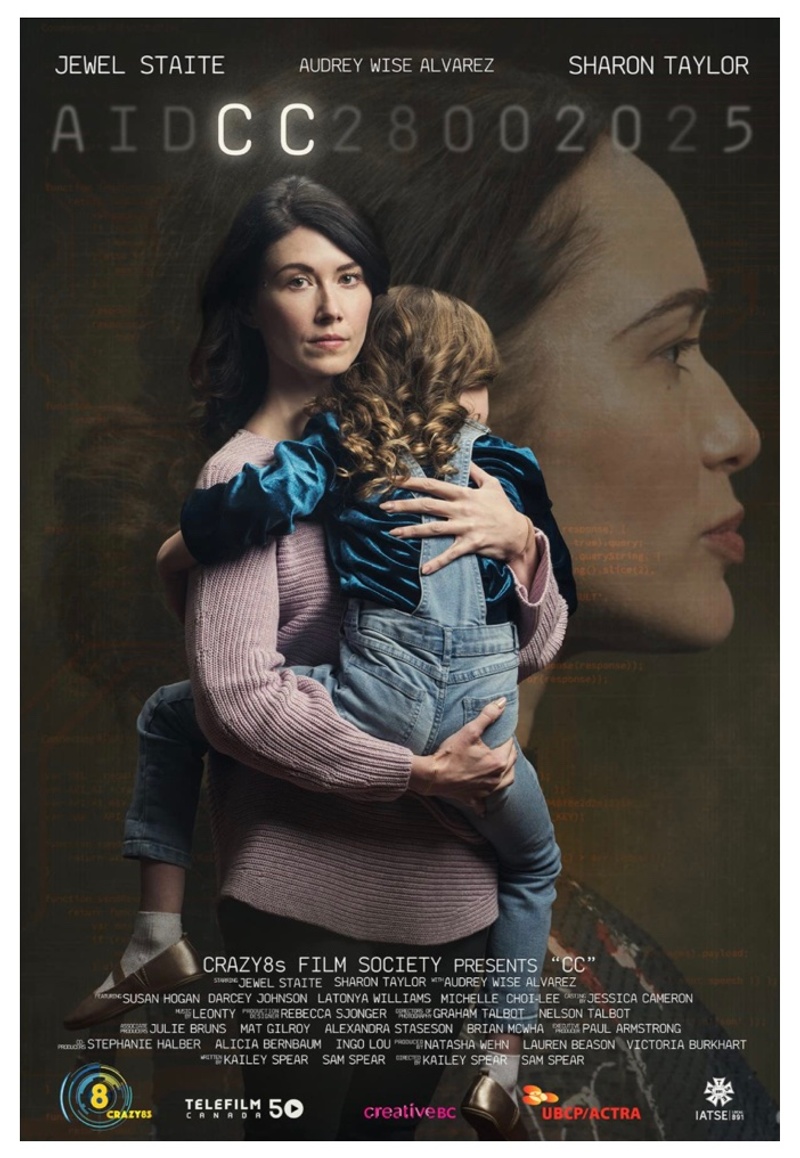
Speaking of technology, how has film technology changed in the last couple of years? And how do you feel like the progression of technology within the film is influencing your work?
Sam: Over the last couple years there has been huge developments in technology being used in film. A lot of it is incredibly exciting and inspiring. Seeing what is being created, and how other filmmakers are using it, really motivates us to push the limits of what we think we can do with our stories and where we can take our audiences. Introducing new worlds is more feasible than ever before.
Kailey: Our biggest VFX short so far was Alien: Ore. We worked with the company Imagine Engine and they did an absolutely amazing job creating the Xenomorph and building out our world to extend beyond what we could actually shoot live. It allowed us to expand our ideas and form the unique setting of Bowen’s Landing.
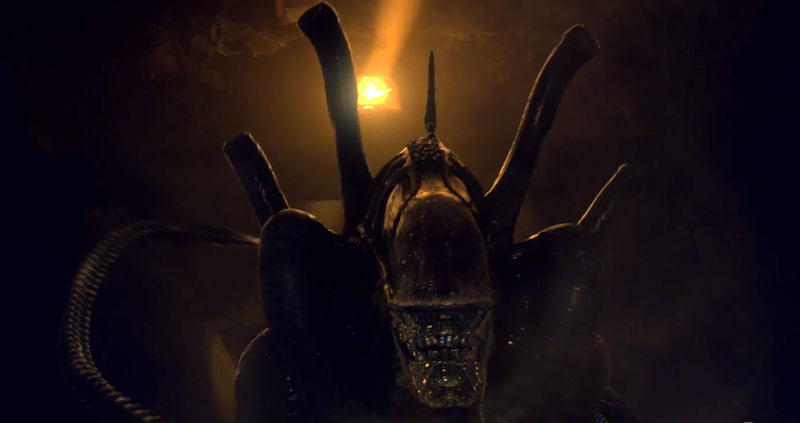

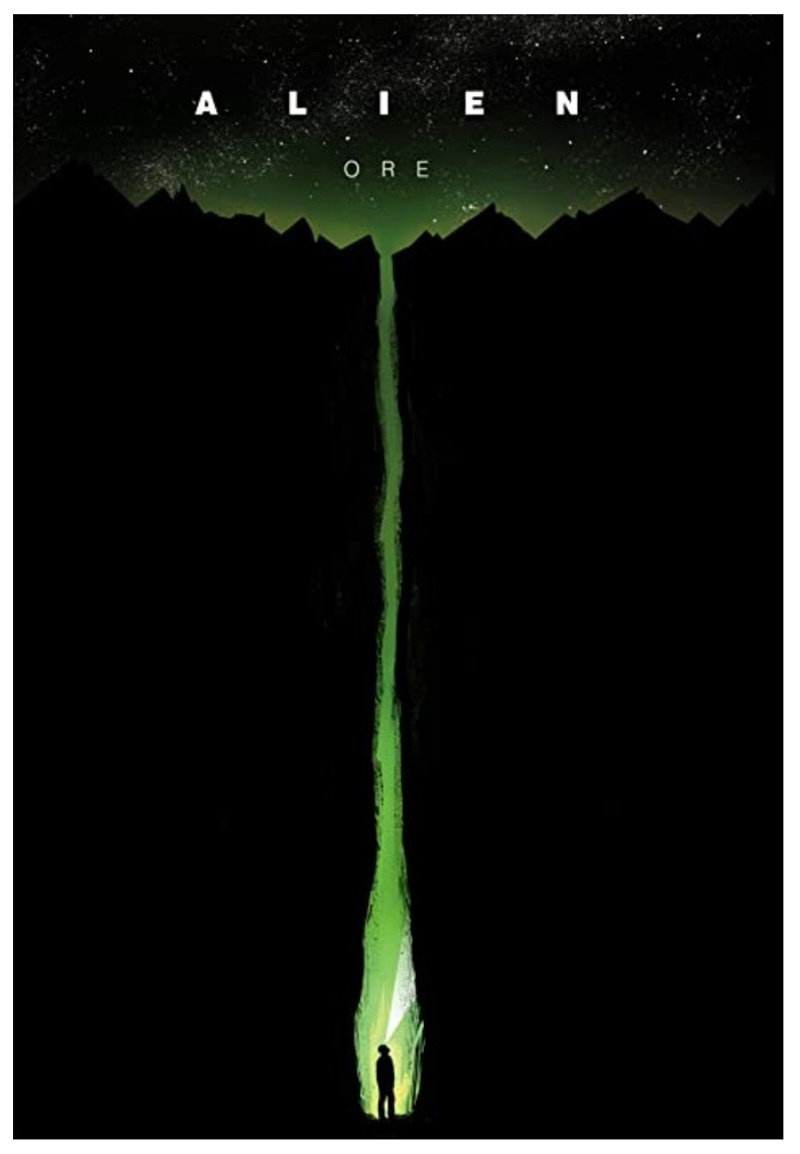
Sam: That being said, along with exciting and inspiring advancements come some that are a bit…nerve wracking.
Kailey: What’s evolving frighteningly swiftly is AI technology. While we haven’t yet used it ourselves in our filmmaking, the idea of its uses and dangers in the world has already influenced our storytelling. CC is obviously about the positives and negatives of AI. In Alien: Ore, we have an AI character, Hanks, who is driven by her code to protect company interest over the lives of the workers. We know that using AI will become part of filmmaking. We know that there will be positive uses for it, but we’re also very concerned about the areas in which it will overstep and compromise the integrity of storytelling. Storytelling is integral to humanity. It’s not only about human expression but also important in the evolution of humanity. We could talk about this for ages! So I’ll cut it short. We feel that while there will definitely be a use for AI in filmmaking, it’s extremely important that human creativity is protected.
I know it’s hard to get funding for films, and you’ve had to work within extreme limitations in the past. Has there been a case where those limitations have pushed you into a creative space that you didn’t think you could get to?
Sam: It’s had its positives and negatives for sure. The positive is that it really does make you be very specific about every single choice that you’re making. Because you don’t have the money to include every tiny thing you want, you’re going to be cutting down and distilling it until what’s left is what’s absolutely necessary for your story. Though, it is hard when you are working under a super restricted budget, and you have this bigger idea for what you want but the resources you have don’t allow you to get there. It can be a bit sad when you have this more realized entity living in your head and only part of it can get on screen. Those cases have definitely kept us motivated to keep going, to push forward to getting more and more of what is actually in our minds out onto the screen.
Kailey: Having a limited budget definitely pushes you to make creative decisions that may not have been made if the budget was limitless. Very interesting choices can be made because of it, which can actually end up strengthening the film in the end. On the other hand, if the budget is limitless, then you can push the scope of your creativity in new ways that would’ve been impossible on a small budget. We’ve experienced small budgets, and seen how being restricted can result in strong choices. Though now we’d love to work with a bigger budget to see where and how we can push our creativity.
What would you do if you had a limitless budget?
Kailey: For one, we could buy ourselves more time. Because time is always a huge factor, more money would allow us to put time doing extra takes to really hone performances as well as get extra shots that can assist the storytelling in a stronger way. We love being able to use the camera to tell the story but when you’re shooting really quickly, that limits how many shots you can take before you have to move on.
Sam: We always try and get the most out of the time that we do have. But if we did have a limitless budget, we would be able to go in and get those extra moments. It’s always so hard when you have the set, you have actors, and you have all the pieces there ready to go but then you have to move on. Time allows you to be present with what is in front of you and play with it more.
Kailey: We’d also love to play with grand-scale production design as well. In an ideal world, we’d love to work on something the scale of The Lord of the Rings, which has been a huge inspiration for us since we first saw it. Sweeping locations, incredible studio sets, amazing costume and production design, being able to make and use practical effects and miniatures as well as use CGI, amazing stunt work… having a budget just opens up the doors to new worlds in a completely different way.
Sam: While we absolutely love the creative freedom CGI opens up, we are a huge huge fan of practical effects. Nowadays, it is often more cost-effective to use CGI. A limitless budget would allow us to realize that dream of ours of being able to dive into using more practical effects. We have a fantasy concept that we have been dreaming about for years that would really benefit from practical creature creations.
What do you think you learned at school that you couldn’t have learned out in the world?
Sam: The program that we went through at SFU, especially at the time that we went, taught us and encouraged us to be the people that were creating the projects. It gave us the confidence to go out and say, “I want to make this film, I’m going to make it happen.”
Kailey: It also gave us the opportunity to try a lot of different jobs because everybody was working on each other’s projects. It is common that people enter film school being like, “I want to be a director, I want to be a DP…” But then when everybody starts working on different projects in different jobs, people find other things they really love doing, like sound design or editing or what have you. For us, our experiences in film school really cemented the fact that we wanted to direct and that that’s where our strengths were.
Sam: Now that we’re directing, we have that appreciation of what the other departments need and are looking for out of what we’re doing, which I think is really helpful. I think that it’s important to know what everybody else is doing, what everyone needs, because filmmaking is such a collaborative art form.
Kailey: Films are all about the team. You can have a great vision, but the film is only as good as all of the pieces that come together. You can’t make a great film without a great team. Having a fantastic crew and cast is everything.
All of your work centers around very strong characters. What do you think makes a captivating character?
Sam: We both come from an acting background so focusing on the characters as the jump off place for the story came naturally. When we were young, we attended Tir-na-nOg Theatre School on Bowen Island and through that, our love of storytelling was first really developed. But, what makes a captivating character? We find people, all people, fascinating. Everyone has a unique story, and there is always something to find out about them. That mystery, what makes them them, where they came from, where they want to go, how they deal with things, what they are capable of…that is captivating. Especially when we are surprised by people. And people always surprise us. When we’re able to put a character up against something, when they have to get through obstacles, we are given a chance to crack into the mystery of who they really are by seeing how they handle what they are faced with. In our characters, we always want to make sure that they are fully realized. We want to make sure that they are all built with their own unique history and individual things that they want out of their lives.
Kailey: Instead of using the term “strong” character we like to say “layered” or “dynamic” character. We feel the word “strong” leads people to think that central characters need to be hero-types who can succeed effortlessly where others fail. But the characters we’re drawn to have many things going on—they’re layered with perhaps conflicting motivations or relationships. They have an effect on the story as well as are affected by the situations they find themselves in and the other characters they encounter, making them dynamic. But, yes, what we find makes a captivating character is to be able to see their struggle. We have always been drawn to characters who really want to do the right thing, but struggle with how to do it. Maybe wanting to do something right will have them do something wrong in their pursuit of what they think is right. We like to have our characters going through struggles and having things that they’re up against. Showing how they navigate obstacles is what we think really shows who they are.
What do you do when you feel stuck with an idea, and how do you persevere when it’s hard?
Sam: Yeah, it can be hard. Hard to keep the momentum going when we feel stuck with an idea. When we get caught in the trap of overthinking. When we have a project that we really want to make but we don’t have the funding to get it on screen. There are a lot of people that have to say yes before a project goes forward. Luckily we’re actors as well so we have a lot of experience with rejection [laughs]. Honestly, the hardest part is probably the pressure that we put on ourselves. That is a constant thing we work on. Working to maintain the drive to push forward while ridding ourselves of self-inflicted stress.
Kailey: We work one day at a time. We keep hold of our goals, and the stories that we want to tell, and just keep trucking along. We move forward one step at a time because that’s really all we can do. It is imperative that we find ways to keep the passion there and not get bogged down by all of the obstacles. Once the passion is gone, then that’s when it becomes really difficult. But I suppose that’s when it’s time to shift careers. There’s no point dealing with the stress of the industry if you don’t have passion anymore, right? So far, running out of passion hasn’t been a problem for us! There is so much for us to be inspired by. Being inspired by others is definitely something that feeds our motivation along with being excited about our own creative goals.
Is it helpful to have each other when you hit a wall?
Kailey: It’s nice having somebody else who knows how hard it is. Sharing that journey is a lot easier than doing it alone because it can be very isolating. It’s nice to have somebody who knows what it takes to get a project made and be there every step of the way, through all of the successes and setbacks. It’s a long hard journey, and it sure is nice not to trek it alone.
What are you excited about in the future?
Sam:: Oooof, there are so many projects we are excited about!
Kailey: One of our dream passion projects is to do an on-screen version of Hamlet. We put it up on stage in Vancouver right after film school, around 10 years ago, to experiment with some of our ideas and it turned out really well.
Sam: We use Shakespeare’s classic iconic dialogue, but it’s set in a modern setting where the royals have the power of fame and celebrity status. Our young Hamlet, who is female in our version, has grown up in the media spotlight. When her father, the king, dies and his ghost comes to tell her that it was her uncle that killed him, she puts on an antic disposition in order to mask what’s going on inside her and the secrets she’s keeping. This antic disposition, her acting strange and wild, manifests almost like a celebrity breakdown in front of the cameras.
Kailey: We’ve been super excited about it since we were around 14.
Sam: Yeah, so that one’s primed. We’re ready to go! We want to bring that to screen! Now!
So what do you do together when you’re waiting for the green light?
Sam: [laughs] We work on other projects.
Kailey: We’re always working.
Kailey and Sam Spear Recommend:
Five Things we Recommend:
The Lord of the Rings (books and films)
The Secret of Roan Inish (film)
John O’Donohue (books and poetry)
Miranda (sitcom)
Snuggles with a dog
- Name
- Kailey and Sam Spear
- Vocation
- directors, actors, writers
Some Things
Pagination
